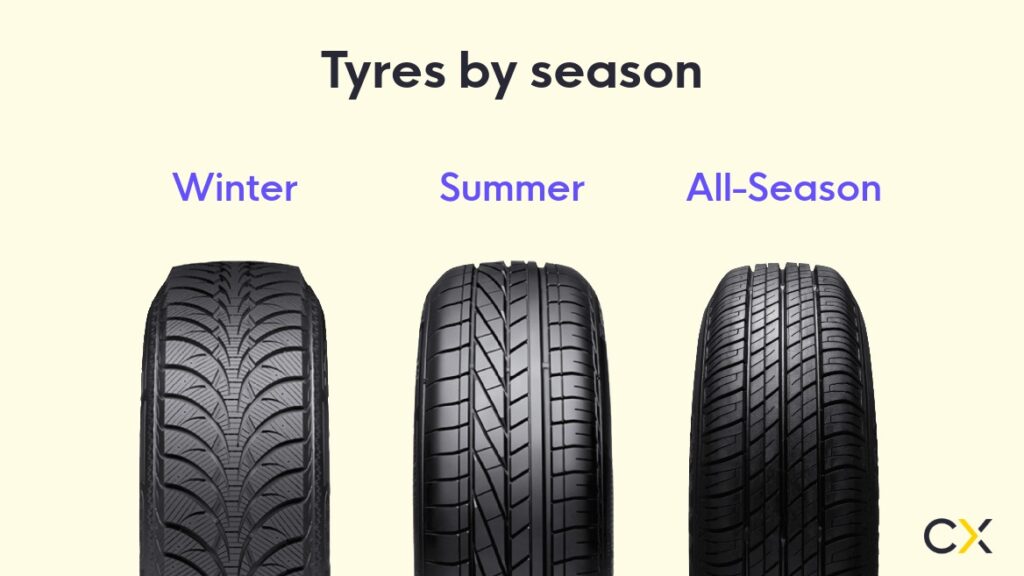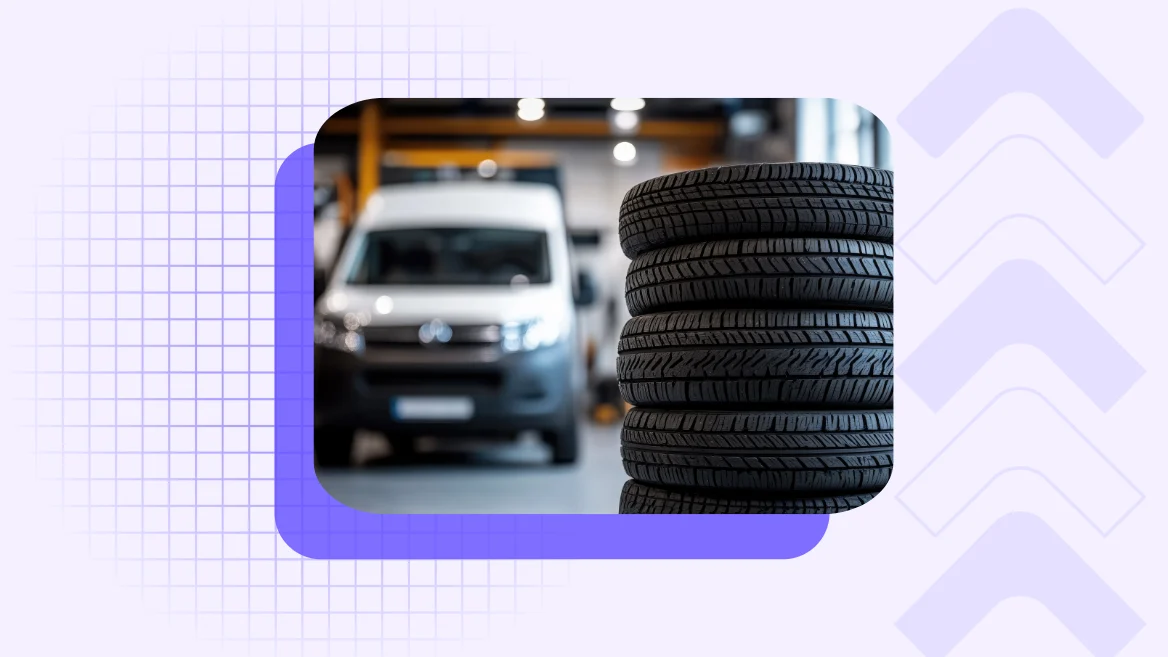If you drive for a living, your tyres take a beating every single day. Long hours on the road, heavy loads, and constant stop-start driving can wear them down fast. Regular tyre checks don’t just keep you safe — they keep your business running smoothly.
Worn or underinflated tyres can lead to breakdowns, poor grip, higher fuel costs, and even fines if you’re caught driving below the legal tread limit. The good news? A few quick checks can prevent all that.
Here’s how checking your tyres properly (and buying the right tyres in the first place) can help you stay safe, save money, and keep your courier van on the road.
What we’ll cover
Get access to 15,000+ loads a day on Courier Exchange
Be your own boss. Set your own hours. Make your own money.
The 4 daily tyre checks every courier should make
Courier work is demanding. You’re often driving hundreds of miles a week, so courier van tyres wear out faster than on most vehicles.
A quick daily check can make all the difference.
1. Damage inspection
Before each shift, take a minute to check for:
- Cuts, bulges or cracks in the sidewalls
- Embedded stones, nails or other debris
- Uneven wear patterns that might point to alignment or suspension issues
Catch these early and you’ll avoid losing a full day to a blowout or failed MOT.
2. Tyre pressure
Check your tyre pressure at least once a week — or every few days if you’re clocking up high mileage. Underinflated tyres waste fuel and reduce grip, while overinflated tyres wear unevenly and can affect handling.
You’ll find the correct pressure for your courier van tyres in your vehicle handbook or on a sticker inside the driver’s door frame. Always check when tyres are cold for an accurate reading.
If your van has a Tyre Pressure Monitoring System (TPMS), don’t ignore the warning light. It’s there for a reason — even a small pressure drop can cause problems over time.
3. Tread depth
Legally, tread depth must be at least 1.6mm across the central three-quarters of the tyre. But for couriers covering long distances or driving in wet conditions, it’s safer to replace tyres at around 3mm.
Try the simple 20p test: insert a 20p coin into the tread. If you can see the outer rim of the coin, your tread is too low and the courier van tyres need replacing.
4. Valve caps
It sounds minor, but missing valve caps can let dirt in and cause slow air leaks.
Always replace them if they go missing — they’re a cheap fix that protects tyre pressure.
Winter vs summer tyres
The tyres you use make a huge difference to performance, especially as temperatures change.

Winter tyres
When temperatures drop below 7°C, the rubber in standard tyres starts to harden, reducing grip. Winter tyres are made from a softer compound that stays flexible in the cold, improving traction on icy or wet roads.
If your courier jobs take you across hilly or rural routes during winter, winter tyres can help prevent sliding or getting stuck. They also make braking more predictable when carrying heavy courier loads or operating haulage vehicles over longer distances..
Summer tyres
Summer tyres perform best in warmer, dry conditions. They give you better handling and van fuel efficiency, as there’s less rolling resistance.
Once spring temperatures return, switch back — driving winter tyres in summer will wear them out faster and use more fuel.
All-season tyres
If you operate across varied routes and don’t want to change tyres twice a year, all-season tyres can be a good compromise.
They offer balanced performance year-round but won’t outperform true winter tyres in freezing conditions.
When to replace your tyres
Tyres naturally wear out over time — but couriers wear them out faster. Knowing when to replace them keeps your van safe and reliable.
Here are the signs that you need new tyres:
- Tread is worn down to the wear bars
- You feel vibrations or wobbling at certain speeds
- Your van pulls to one side even after checking alignment
- There’s visible damage, cuts, or sidewall bulges
If one tyre is beyond saving, it’s usually best to replace both on the same axle. Mixing new and worn tyres can affect stability and braking.
And don’t forget to rotate your courier van tyres every 6,000–8,000 miles to promote even wear — especially on front-wheel drive vans, where the front tyres take more strain.
The cost of ignoring tyre care
Skipping tyre checks might seem harmless, but the consequences can hit hard.
- Higher fuel use: Low tyre pressure increases rolling resistance, burning more fuel over every mile.
- Reduced safety: Worn or damaged tyres mean longer stopping distances, especially in wet conditions.
- Lost time: A puncture can easily cost you half a day’s work and delay your jobs.
- Fines: Driving with illegal tread depth can lead to penalties of up to £2,500 per tyre — and points on your licence.
A well-maintained set of courier van tyres can last tens of thousands of miles. Neglecting them can cost you in fuel, downtime, and replacement costs.
Tyre buying and maintenance tips for couriers
When it’s time to replace or upgrade your courier tyres, a few smart choices can save you money in the long run.
Choose the right tyres for your work
Match your tyres to how and where you drive:
- Urban couriers: Go for tyres with good puncture resistance and shorter braking distances.
- Long-distance couriers: Prioritise fuel efficiency with low rolling resistance tyres.
- Heavy-load vans: Check load ratings and sidewall strength.
If you’re considering hiring or buying a courier van, factor in the tyre size and replacement cost — larger commercial tyres can be more expensive, but they often last longer.
Check alignment and suspension
If you notice uneven tread wear, your alignment might be off. Poor alignment shortens tyre life and affects handling, especially when carrying heavy loads.
A quick check at a garage can save you from replacing tyres prematurely — and keeps the van handling predictably in all weather conditions.
Keep a spare or tyre repair kit
Modern vans often come with a repair kit instead of a spare wheel. Make sure yours is complete and that you know how to use it. Keeping a compact compressor and sealant, as well as following manual handling best-practice, can help get you to the next garage safely.
And if you have van breakdown cover, check whether it includes roadside tyre replacement — not all policies do.
Seasonal tyre maintenance checklist
| Season | What to check | Why it matters |
|---|---|---|
| Winter | Switch to winter tyres below 7°C | Better grip and braking on icy roads |
| Spring | Inspect for cracks from salt and grit | Prevent air leaks and structural damage |
| Summer | Monitor pressure more often | Heat expands air, increasing wear |
| Autumn | Check tread depth before wet season | Maintain grip and avoid aquaplaning |
Building these into your tyre checks routine means fewer surprises when the weather turns.
Tyre care and your courier business
Your tyres connect everything you do. Whether it’s keeping up with international courier work, managing tight delivery slots, or protecting your van’s warranty, good tyres make all the difference.
Reliable tyres help you:
- Deliver on time, even in poor weather
- Reduce downtime from punctures or repairs
- Keep your fuel and courier van maintenance costs predictable
- Protect your professional image when bidding for courier work
And with the rise of electric courier vans, tyre choice matters more than ever.
Heavier vehicles wear tyres faster, so regular tyre checks are even more important to get the best mileage out of every set.
Final takeaway: small checks, big savings
Tyres might not seem like the most exciting part of your courier van, but they’re one of the easiest ways to cut costs and stay safe.
By building quick tyre checks into your daily routine, you’ll save fuel, prevent downtime, and protect your income. It only takes a few minutes — and the benefits last for thousands of miles.
Whether you’re hauling heavy courier loads, working long shifts, or preparing your van for its next MOT, look after your tyres and they’ll look after you.
Get access to 15,000+ daily loads on Courier Exchange
Be your own boss. Set your own hours. Make your own money.
Frequently asked questions
How often should I do tyre checks as a courier?
You should do quick tyre checks before every shift and a full inspection at least once a week. Look for wear, cuts, and pressure changes.
What’s the best tread depth for courier van tyres?
The legal minimum is 1.6mm, but many experts recommend replacing courier van tyres once tread reaches around 3mm for better grip and braking.
Can I use winter tyres all year round?
You can, but they’ll wear faster in warm weather and affect van fuel efficiency. It’s better to switch back to summer tyres once temperatures rise above 7°C.
How do I check my tyre pressure properly?
Use a reliable pressure gauge when tyres are cold. Compare your readings to the recommended PSI in your van manual. If you’re unsure, most petrol stations can help.
Do couriers need all-season tyres?
All-season tyres can work well for couriers who drive in mixed weather but don’t want to swap sets twice a year. They offer balanced performance, though not as much grip as true winter tyres in snow or ice.




